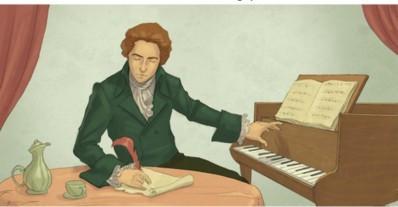
Composing endgame studies
Solving endgame studies is known as an excellent way to improve your calculation skills. But what about composing them? I have always had a weakness for this activity, and I believe it can help your tactical vision (move orders, intermediate moves, defensive play...) a great deal. Moreover, it definitely won´t harm your overall creativity at the board, and in the process you will pick up endgame knowledge too. Here is a short introduction to the composition of endgame studies.
Any study is related to at least one specific motif, for example mate, promotion, stalemate, trapping a piece... the list is endless. Two key aspects of the composition are i) beauty; ii) difficulty. I focus mainly on the former in my studies, still I try not to make them too easy for the solver.
How do we start our work? Far from being a professional composer, I would think of the following 3 starting points:
a) A specific position. For example, a curious mate in the middle of the board.
b) A certain mechanism, i.e. the interaction between 2 or several pieces. A fork, a pin etc.
c) A fragment of a real game.
Let´s see one example of each case. By the way, composing a study today is much easier than in the days of Kasparian or Grigoriev, when chess engines or tablebases were not yet invented. Hats off to them!
A specific position. You can get there by simply shuffling around the pieces on the board. For example, I once tried to construct a position where a bishop and a pawn prevailed over a rook and a pawn. This is what I achieved:
The rook is trapped, in view of 1...Rb3 2.Bc4+ or 1...Rg4 2.Bh3. Also notice that after 1...Ra3 2.bxa3 White has the "right" bishop in relation to the a8 quare. I came across this detail when placing the pieces one file upwards on the board - then 1...Ra4! draws, as you can see yourself.
So, this is how things should end. Well, how do we get there? The rook won´t settle on g3 deliberately. I thought of an attraction mechanism: with the king on e3 and the rook on g1, we could place a knight on g3.
Black, faced with the threat of Kf2, takes on g3, and White plays Kf2 anyway. However, just putting the knight on e4 or f5 and asking "White to play and win" would be too easy for the solver - after all, when solving quizzes, we are used to sacrifices being the solution, so 1.Ng3 would be found in a few seconds. I therefore created some more features, and finally my study ended up looking like this:
Note that you have to make sure that no other solution, than yours, is possible! Fortunately, the engines are very useful for this kind of task. On another note, I generally try to avoid checks or captures on the first move, but that is not mandatory, of course.
A certain mechanism. You might have come across the following opening trap:
I like this picture a lot - no matter how the bishop is captured, the royal family is forked on the next move. Later, I tried to use this mechanism in a study. I arranged the pieces in the following way:
As you can see, in the end it wasn´t a bishop, but a rook that settled between Black´s king and queen, in order to increase the surprise effect. For this reason, a mating pattern had to be added, else the black queen would have no reason to take on f5. Also a passed a-pawn was needed in order to let White win in the end.
A fragment of a real game. Once I came across a curious mate with just king and rook vs. king and rook on the board. I can´t remember exactly where, but Beliavsky touched upon it within the analysis of his game against Azmaiparashvili in Portoroz, 1997 (Chess Informant 70), and it also appeared in other games, like the following:
Quite an aestethic endgame, isn´t it? I decided to compose a study based on this mate. Here it is.
Note that the more alternatives on the 1st move, the harder the study, Here there is not much more to do for White apart from 1.f6, on the other hand 3.h7! might not be immediately obvious.
I hope you have enjoyed this article. Good luck composing! Here are a few more studies.
1. White to play and win (easy)
_______________________________
2. White to play and win (medium, related to case "a" above)
_____________________________________________________________
3. White to play and win (medium, related to case "b" above)
_____________________________________________________________
And here are the solutions to the exercises featured in the post Candidate moves IV.
1. After 1.Qf8+ Kg6 2.Qg8+ Qg7 Black defends. This leads us to the deflective 1.e4!. After 1...Qxe4 2.Qf8+ Kg6 3.Qg8+ Kf6 (or 3...Kh5 4.Qxf7+ ) 4.Qh8+ White wins. (based on R.Akesson - M.Siva 2016)
2. A first impulse is 1.Qf3 Qe7 2.Nxc5 Qxc5 3.Qf7+, however after 3...Kd8 4.Nxe6+ Bxe6 5.Qxe6 Qb4+
6.Bd2 Qe4+ Black is alive. Much stronger is 1.Qh5+! first, so that after 11...g6 2.Qf3 Qe7 3.Nxc5 Qxc5 4.Qf7+ Kd8, White can play 5.Qf6+ winning a rook. (M.Tal - R.Vaganian 1973)
3. The obvious 1...Rxd3? 2.Qxd3 c4 allows 3.Nd4! and White is fine - Tikkanen. But by 1...Qc6! first Black avoids this trick, i.e. 2.f3 Rxd3! 3.Qxd3 c4 with a huge advantage. (L.Crevatin - I.Babikov 2016)
4. We soon notice 1.Rg4+ Rxg4 2.Bxg4, but by 2...Nxh6 Black defends. So, first 1.g3+! and after 1...Nxg3 2.Rg4+ Rxg4 3.Bxg4 White wins - Golubev. (based on A.Deviatkin - K.Landa 2008)